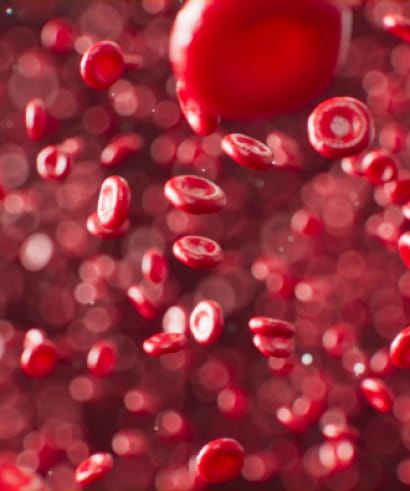The prevalence of Von Willebrand disease (VWD) in the general population is estimated at between 0.6 and 1.3% (including all forms) depending on the study, but the prevalence of symptomatic VWD that requires specific treatment is approximately 1/10 000. Type 3 VWD is much more rare (1/1 000 000).
Clinical description
Age of onset varies, with earlier onset being associated with more severe VWF deficiency. The disease manifests as abnormal bleeding of variable severity occurring either spontaneously or in association with an invasive procedure. The bleeding anomalies are generally characterized by mucocutaneous hemorrhage (epistaxis, menorrhagia, bleeding from minor wounds, etc.) but hematomas and hemarthrosis may occur in more severe forms.
Etiology
VWD is caused by mutations in the VWF gene (12p13.3) encoding the multimeric VWF protein. The VWF protein has an intraplatelet, endothelial and plasmatic localization and plays essential roles both in the interaction of platelets with the injured vessel wall and in the transport and stabilization of factor VIII (FVIII).
Diagnostic methods
Diagnosis relies on laboratory tests involving functional and immunological assays of VWF and FVIII levels. Determination of the type of VWD requires other specific tests such as studies of the distribution of VWF multimers.
Differential diagnosis
Measurements of VWF levels (antigen and functions) generally allow VWD to be distinguished from hemophilia A. However, these tests do not allow differentiation of type 2N VWD, which requires more specific assays. Differentiation between acquired von Willebrand syndrome (AVWS), which occurs in association with another underlying pathology, and inherited VWD is more problematic. The fact that individuals in the general population belonging to blood group O may also have moderately lower levels of VWF should also be taken into consideration in the differential diagnosis.
Antenatal diagnosis
In at risk pregnancies, the identification of underlying VWF mutations may be used for prenatal diagnosis of type 3 VWD.
How do you get VWD?
VWD is usually inherited. It is passed down through the genes from either parent to a child of either sex. However, sometimes VWD occurs due to a spontaneous change in the VWD gene before the baby is born. The figure below shows the inheritance of VWD.
VWD Types 1 and 2 are usually inherited in what is known as a ‘dominant’ pattern. This means that a parent who has VWD has a one in two (50 per cent) chance of passing a VWD gene on to each of his or her children.
Type 3 VWD, however, is usually inherited in a ‘recessive’ pattern. This type occurs when the child inherits the gene from both parents. Even if both parents have mild symptoms or no symptoms at all, their child may be severely affected.
Genetic counseling
VWD is most often transmitted in an autosomal dominant manner, however, the mode of inheritance is autosomal recessive for type 3 VWD and for some of the type 2 subtypes. Genetic counseling should be proposed to inform patients about the severity of the disease and the associated risks, and to allow screening for detection of other affected family members. For couples at risk of having a child with type 3 disease, genetic counseling may be best discussed in a specialized multidisciplinary center.
The information is taken from the orpha.net website




